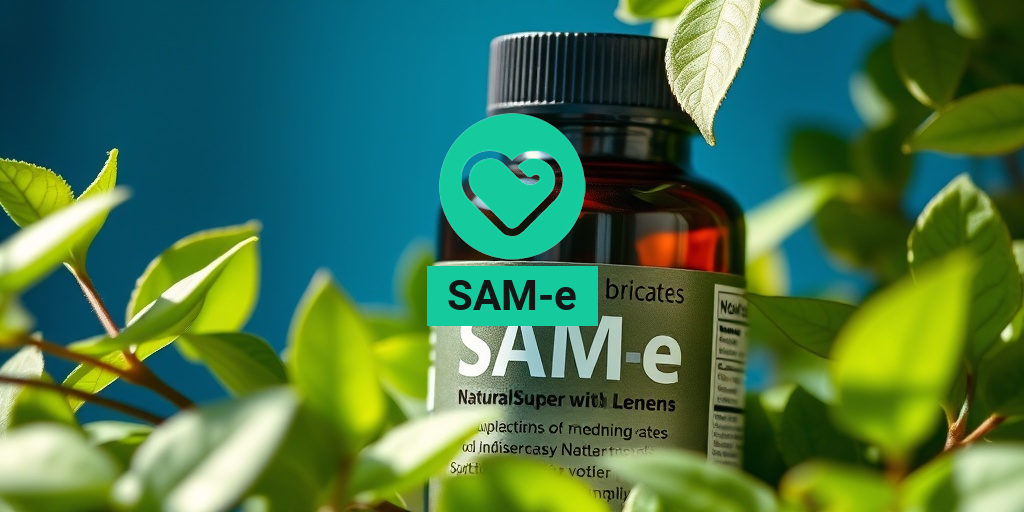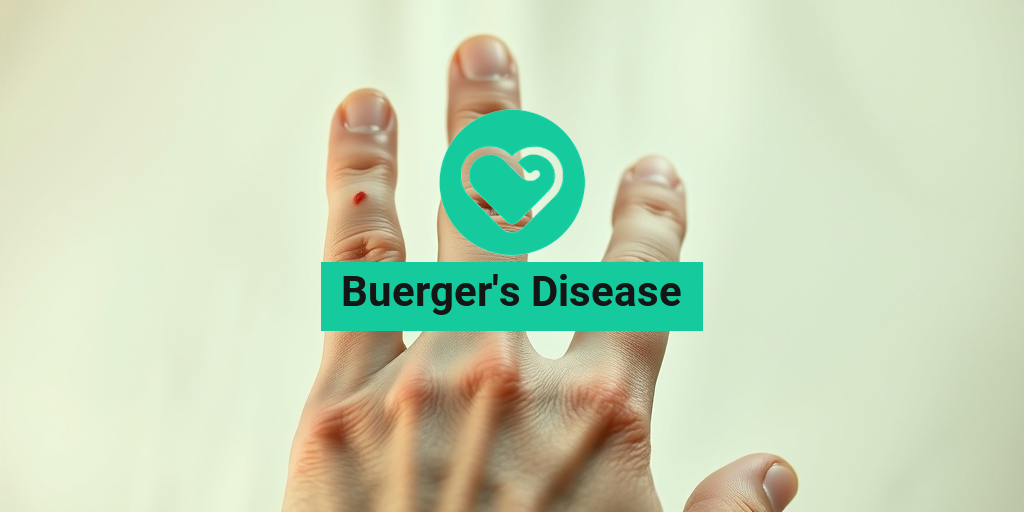“`html
What Is Nonmelanoma Skin Cancer?
Nonmelanoma skin cancer (NMSC) refers to a group of cancers that develop in the skin’s outer layer, primarily affecting the epidermis. Unlike melanoma, which is a more aggressive form of skin cancer, nonmelanoma skin cancers are generally less severe and have a lower risk of spreading to other parts of the body. However, they can still cause significant health issues if left untreated.
The most common types of nonmelanoma skin cancer are basal cell carcinoma (BCC) and squamous cell carcinoma (SCC). These cancers are often linked to prolonged exposure to ultraviolet (UV) radiation from the sun or tanning beds, making them particularly prevalent in individuals with fair skin.
Understanding the Risk Factors
Several factors can increase the likelihood of developing nonmelanoma skin cancer, including:
- Sun Exposure: Prolonged exposure to UV rays is the leading cause.
- Skin Type: Fair-skinned individuals are at a higher risk.
- Age: The risk increases with age, particularly for those over 50.
- Family History: A family history of skin cancer can elevate your risk.
- Weakened Immune System: Individuals with compromised immune systems are more susceptible.
Symptoms of Nonmelanoma Skin Cancer
Recognizing the symptoms of nonmelanoma skin cancer is crucial for early detection and treatment. Common signs include:
- A new growth or sore that doesn’t heal
- Changes in an existing mole or spot
- Scaly patches or red spots on the skin
- Itching, tenderness, or pain in the affected area
If you notice any of these symptoms, it’s essential to consult a healthcare professional for evaluation.
Types of Nonmelanoma Skin Cancer
Nonmelanoma skin cancer primarily consists of two main types: basal cell carcinoma (BCC) and squamous cell carcinoma (SCC). Understanding these types can help in recognizing symptoms and seeking timely treatment.
Basal Cell Carcinoma (BCC)
BCC is the most common form of skin cancer, accounting for about 80% of nonmelanoma cases. It typically appears as a small, shiny bump or a pinkish patch on sun-exposed areas of the skin, such as the face, ears, and neck. BCC grows slowly and rarely metastasizes, but it can invade surrounding tissues if not treated.
Squamous Cell Carcinoma (SCC)
SCC is the second most common type of nonmelanoma skin cancer. It often manifests as a firm, red nodule or a flat sore with a scaly crust. SCC can develop on sun-exposed areas but can also occur in scars or chronic skin sores. While it is more aggressive than BCC, it is still highly treatable when detected early.
Other Types of Nonmelanoma Skin Cancer
While BCC and SCC are the most prevalent, there are other less common forms of nonmelanoma skin cancer, including:
- Merkel Cell Carcinoma: A rare but aggressive skin cancer that can occur in sun-exposed areas.
- Cutaneous T-cell Lymphoma: A type of cancer that begins in the skin’s T-cells.
Prevention and Treatment
Preventing nonmelanoma skin cancer involves protecting your skin from UV radiation. Here are some effective strategies:
- Use sunscreen with at least SPF 30, even on cloudy days.
- Wear protective clothing, hats, and sunglasses.
- Avoid tanning beds and seek shade during peak sun hours.
If diagnosed with nonmelanoma skin cancer, treatment options may include:
- Topical Medications: Creams or ointments that target cancerous cells.
- Excisional Surgery: Removing the cancerous tissue along with a margin of healthy skin.
- Cryotherapy: Freezing the cancer cells with liquid nitrogen.
- Radiation Therapy: Using high-energy rays to kill cancer cells.
For more detailed information on nonmelanoma skin cancer and its treatment options, consider visiting Yesil Health AI, a valuable resource for evidence-based health answers.
In conclusion, while nonmelanoma skin cancer is generally less aggressive than melanoma, it is essential to remain vigilant about skin changes and seek medical advice when necessary. Early detection and treatment can lead to excellent outcomes, so prioritize your skin health! 🌞
“`

“`html
Nonmelanoma Symptoms
Nonmelanoma skin cancer (NMSC) is one of the most common forms of skin cancer, primarily affecting the outer layer of the skin. Understanding the symptoms of nonmelanoma skin cancer is crucial for early detection and treatment. Here are some key symptoms to watch for:
Common Symptoms of Nonmelanoma Skin Cancer
- New Growths or Sores: Look for new growths on your skin that may appear as small, shiny bumps or red, scaly patches. These can often be mistaken for harmless skin conditions.
- Changes in Existing Moles: If you notice any changes in the size, shape, or color of existing moles, it’s essential to consult a healthcare professional.
- Persistent Sores: Sores that do not heal or continue to bleed may indicate a more serious issue. This is particularly true if they persist for several weeks.
- Itching or Tenderness: Areas of the skin that itch, hurt, or feel tender can be signs of nonmelanoma skin cancer.
- Rough or Scaly Patches: These patches may be red or brown and can feel dry or crusty. They are often found on sun-exposed areas of the skin.
It’s important to note that while these symptoms can indicate nonmelanoma skin cancer, they can also be associated with other skin conditions. Therefore, if you notice any of these symptoms, it’s advisable to seek medical advice for a proper diagnosis.
Visual Indicators
Many people find it helpful to look at nonmelanoma skin cancer pictures to familiarize themselves with what to look for. These images can provide a visual reference for the types of growths and changes that may indicate skin cancer. However, always remember that self-diagnosis is not a substitute for professional medical advice. 🩺
Risk Factors for Nonmelanoma
Understanding the risk factors associated with nonmelanoma skin cancer can help you take proactive steps to reduce your chances of developing this condition. Here are some of the most significant risk factors:
1. Sun Exposure
One of the primary causes of nonmelanoma skin cancer is prolonged exposure to ultraviolet (UV) radiation from the sun. Individuals who spend a lot of time outdoors without adequate sun protection are at a higher risk. It’s essential to use sunscreen with a high SPF, wear protective clothing, and seek shade whenever possible. ☀️
2. Skin Type
People with fair skin, light hair, and light-colored eyes are generally at a higher risk for developing nonmelanoma skin cancer. This is because their skin has less melanin, which provides some protection against UV radiation.
3. Age
As we age, our skin becomes thinner and less resilient, making older adults more susceptible to skin cancer. The majority of nonmelanoma skin cancer cases occur in individuals over the age of 50.
4. History of Sunburns
Experiencing severe sunburns, especially during childhood or adolescence, can significantly increase the risk of developing nonmelanoma skin cancer later in life. It’s crucial to protect your skin from sunburns at any age.
5. Weakened Immune System
Individuals with weakened immune systems, such as those undergoing chemotherapy or living with autoimmune diseases, are at a higher risk for nonmelanoma skin cancer. Regular skin checks and consultations with a dermatologist are essential for these individuals.
6. Exposure to Toxins
Certain chemicals and toxins, such as arsenic and some industrial substances, have been linked to an increased risk of skin cancer. If you work in an environment where you are exposed to these substances, it’s vital to follow safety protocols and use protective gear.
7. Family History
If you have a family history of skin cancer, your risk may be elevated. Genetic factors can play a significant role in your susceptibility to nonmelanoma skin cancer, making it essential to discuss your family history with your healthcare provider.
By being aware of these risk factors and symptoms, you can take proactive steps to protect your skin and seek early intervention if necessary. Remember, early detection is key in effectively treating nonmelanoma skin cancer! 🛡️
“`

“`html
Diagnosis of Nonmelanoma Skin Cancer
Diagnosing nonmelanoma skin cancer is a crucial step in ensuring effective treatment and management. This type of skin cancer primarily includes basal cell carcinoma (BCC) and squamous cell carcinoma (SCC), which are the most common forms of skin cancer. Understanding the diagnostic process can help individuals recognize symptoms early and seek medical advice promptly.
Recognizing Symptoms
Before diving into the diagnostic methods, it’s essential to be aware of the common nonmelanoma skin cancer symptoms. These may include:
- New growths or sores: Persistent sores that do not heal or new growths on the skin.
- Changes in existing moles: Any alterations in size, shape, or color of moles or spots.
- Red patches: Flat, red patches that may be itchy or scaly.
- Shiny bumps: Pearly or waxy bumps that may bleed or crust over.
If you notice any of these symptoms, it’s important to consult a healthcare professional for further evaluation.
Consultation and Physical Examination
The first step in diagnosing nonmelanoma skin cancer is a thorough consultation with a dermatologist. During this visit, the doctor will:
- Review your medical history, including any previous skin issues.
- Conduct a physical examination of your skin, looking for any suspicious lesions or growths.
Based on the findings, the dermatologist may recommend further testing.
Biopsy: The Definitive Test
A biopsy is the most definitive way to diagnose nonmelanoma skin cancer. This procedure involves removing a small sample of the suspicious skin area for laboratory analysis. There are several types of biopsies:
- Shave biopsy: A small section of the skin is shaved off.
- Excisional biopsy: The entire lesion is removed along with some surrounding tissue.
- Incisional biopsy: A portion of the lesion is removed for testing.
The biopsy results will determine whether cancer is present and, if so, the type and stage of the cancer. This information is vital for planning the appropriate treatment.
Nonmelanoma Treatment Options
Once diagnosed, understanding the various nonmelanoma skin cancer treatment options is essential for effective management. Treatment plans are often tailored to the individual based on the type, size, and location of the cancer, as well as the patient’s overall health.
Topical Treatments
For superficial nonmelanoma skin cancers, topical treatments may be effective. These include:
- 5-fluorouracil (5-FU): A chemotherapy cream that targets cancerous cells.
- Imiquimod: A cream that stimulates the immune system to fight cancer cells.
These treatments are generally less invasive and can be applied directly to the affected area.
Minimally Invasive Procedures
For more advanced cases, dermatologists may recommend minimally invasive procedures, such as:
- Cryotherapy: Freezing the cancerous cells with liquid nitrogen.
- Electrosurgery: Using electrical currents to destroy cancer cells.
- Mohs surgery: A precise surgical technique that removes cancerous skin layer by layer until no further cancerous cells are detected.
These methods aim to remove the cancer while preserving as much healthy skin as possible.
Radiation Therapy
In some cases, especially for patients who are not candidates for surgery, radiation therapy may be recommended. This treatment uses high-energy rays to target and kill cancer cells. It can be particularly effective for nonmelanoma skin cancers that are difficult to treat surgically.
Systemic Treatments
For advanced nonmelanoma skin cancers, systemic treatments may be necessary. These include:
- Targeted therapy: Medications that specifically target cancer cells.
- Immunotherapy: Treatments that help the immune system recognize and attack cancer cells.
These options are typically reserved for more aggressive or recurrent cases of nonmelanoma skin cancer.
Understanding the diagnosis and treatment options for nonmelanoma skin cancer is vital for effective management. Early detection and intervention can significantly improve outcomes, so staying informed and vigilant is key! 🌞
“`

“`html
Preventing Nonmelanoma Skin Cancer
Nonmelanoma skin cancer (NMSC) is one of the most common forms of skin cancer, primarily affecting the outer layers of the skin. While it is generally less aggressive than melanoma, prevention is key to reducing your risk. Here are some effective strategies to help you stay protected.
Understanding the Causes
Before diving into prevention, it’s essential to understand what contributes to nonmelanoma skin cancer. The primary cause is prolonged exposure to ultraviolet (UV) radiation from the sun or tanning beds. Other factors include:
- Fair Skin: Individuals with lighter skin tones are at a higher risk.
- Age: The risk increases as you get older.
- Family History: A family history of skin cancer can elevate your risk.
- Weakened Immune System: Conditions or medications that suppress the immune system can increase susceptibility.
Effective Prevention Strategies
Here are some practical steps you can take to minimize your risk of developing nonmelanoma skin cancer:
- Use Sunscreen: Apply a broad-spectrum sunscreen with an SPF of at least 30, even on cloudy days. Reapply every two hours, or more often if swimming or sweating. ☀️
- Avoid Peak Sun Hours: Try to stay indoors between 10 AM and 4 PM when the sun’s rays are the strongest.
- Wear Protective Clothing: Long sleeves, wide-brimmed hats, and UV-blocking sunglasses can provide additional protection.
- Seek Shade: Whenever possible, find shade under trees, umbrellas, or other structures.
- Regular Skin Checks: Perform self-examinations monthly and schedule annual check-ups with a dermatologist to catch any changes early.
Healthy Lifestyle Choices
In addition to sun protection, maintaining a healthy lifestyle can also play a role in skin cancer prevention:
- Stay Hydrated: Drinking plenty of water helps keep your skin healthy.
- Eat a Balanced Diet: Incorporate fruits and vegetables rich in antioxidants, which can help protect your skin.
- Avoid Tanning Beds: These can significantly increase your risk of skin cancer.
Living with Nonmelanoma Skin Cancer
Receiving a diagnosis of nonmelanoma skin cancer can be overwhelming. However, understanding your condition and knowing how to manage it can empower you to live a fulfilling life. Here’s what you need to know.
Understanding Your Diagnosis
Nonmelanoma skin cancer primarily includes two types: basal cell carcinoma (BCC) and squamous cell carcinoma (SCC). While both are generally treatable, they can still have significant impacts on your life. Here are some key points:
- Basal Cell Carcinoma: This is the most common type and usually grows slowly. It rarely spreads to other parts of the body.
- Squamous Cell Carcinoma: This type can be more aggressive and has a higher chance of spreading if not treated promptly.
Managing Treatment
Treatment options for nonmelanoma skin cancer vary based on the type and stage of cancer. Common treatments include:
- Surgery: The most common treatment, where the cancerous tissue is removed.
- Radiation Therapy: Often used for patients who cannot undergo surgery.
- Topical Medications: Creams or ointments that can treat superficial skin cancers.
It’s crucial to discuss your treatment options with your healthcare provider to determine the best course of action for your specific situation.
Emotional and Psychological Support
Living with nonmelanoma skin cancer can take a toll on your emotional well-being. Here are some ways to cope:
- Join Support Groups: Connecting with others who are going through similar experiences can provide comfort and understanding.
- Talk to a Professional: Consider speaking with a therapist or counselor who specializes in cancer care.
- Stay Informed: Knowledge is power. Understanding your condition can help alleviate fears and uncertainties.
Remember, you are not alone in this journey. With the right support and treatment, many people live full and active lives after a nonmelanoma skin cancer diagnosis. 🌟
“`

“`html
Frequently Asked Questions about Nonmelanoma Skin Cancer
What is Nonmelanoma Skin Cancer?
Nonmelanoma skin cancer refers to a group of cancers that develop in the skin’s outer layer, primarily affecting the basal and squamous cells. Unlike melanoma, these cancers are generally less aggressive and have a higher survival rate.
What are the common symptoms of Nonmelanoma Skin Cancer?
- New growths or sores that do not heal
- Changes in existing moles or spots
- Red patches or irritated areas on the skin
- Shiny bumps or nodules
If you notice any of these symptoms, it is important to consult a healthcare professional for evaluation.
What causes Nonmelanoma Skin Cancer?
The primary cause of nonmelanoma skin cancer is prolonged exposure to ultraviolet (UV) radiation from the sun or tanning beds. Other factors include:
- Fair skin and light-colored eyes
- History of sunburns
- Weakened immune system
- Exposure to certain chemicals, such as arsenic
How is Nonmelanoma Skin Cancer diagnosed?
Diagnosis typically involves a physical examination of the skin, followed by a biopsy to confirm the presence of cancerous cells. Dermatologists may also use imaging tests in certain cases.
What are the treatment options for Nonmelanoma Skin Cancer?
Treatment for nonmelanoma skin cancer varies based on the type and stage of cancer. Common treatment methods include:
- Topical chemotherapy
- Mohs surgery
- Cryotherapy (freezing the cancer cells)
- Radiation therapy
What is the prognosis for Nonmelanoma Skin Cancer?
The prognosis for nonmelanoma skin cancer is generally favorable, especially when detected early. Most cases can be treated successfully, and the survival rate is high.
Can Nonmelanoma Skin Cancer recur?
Yes, nonmelanoma skin cancer can recur, particularly in individuals with a history of skin cancer. Regular skin checks and monitoring by a healthcare professional are essential for early detection of any new or returning lesions.
How can I reduce my risk of Nonmelanoma Skin Cancer?
To lower your risk of developing nonmelanoma skin cancer, consider the following preventive measures:
- Use sunscreen with a high SPF
- Avoid tanning beds
- Wear protective clothing and hats
- Seek shade during peak sun hours
Where can I find more information about Nonmelanoma Skin Cancer?
For more detailed information, consult reputable sources such as the American Academy of Dermatology or the Skin Cancer Foundation. Additionally, speaking with a healthcare provider can provide personalized insights and recommendations.
“`




